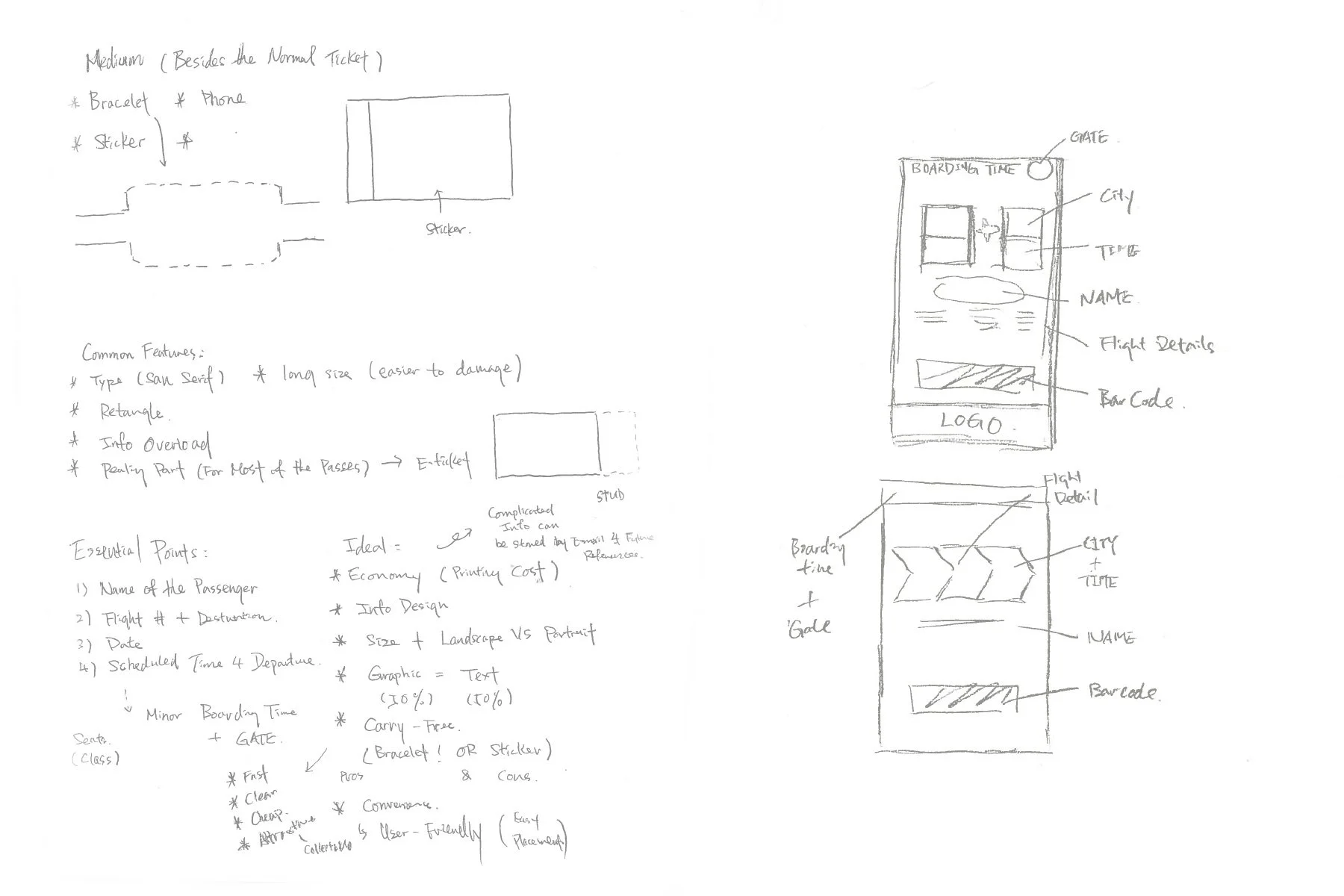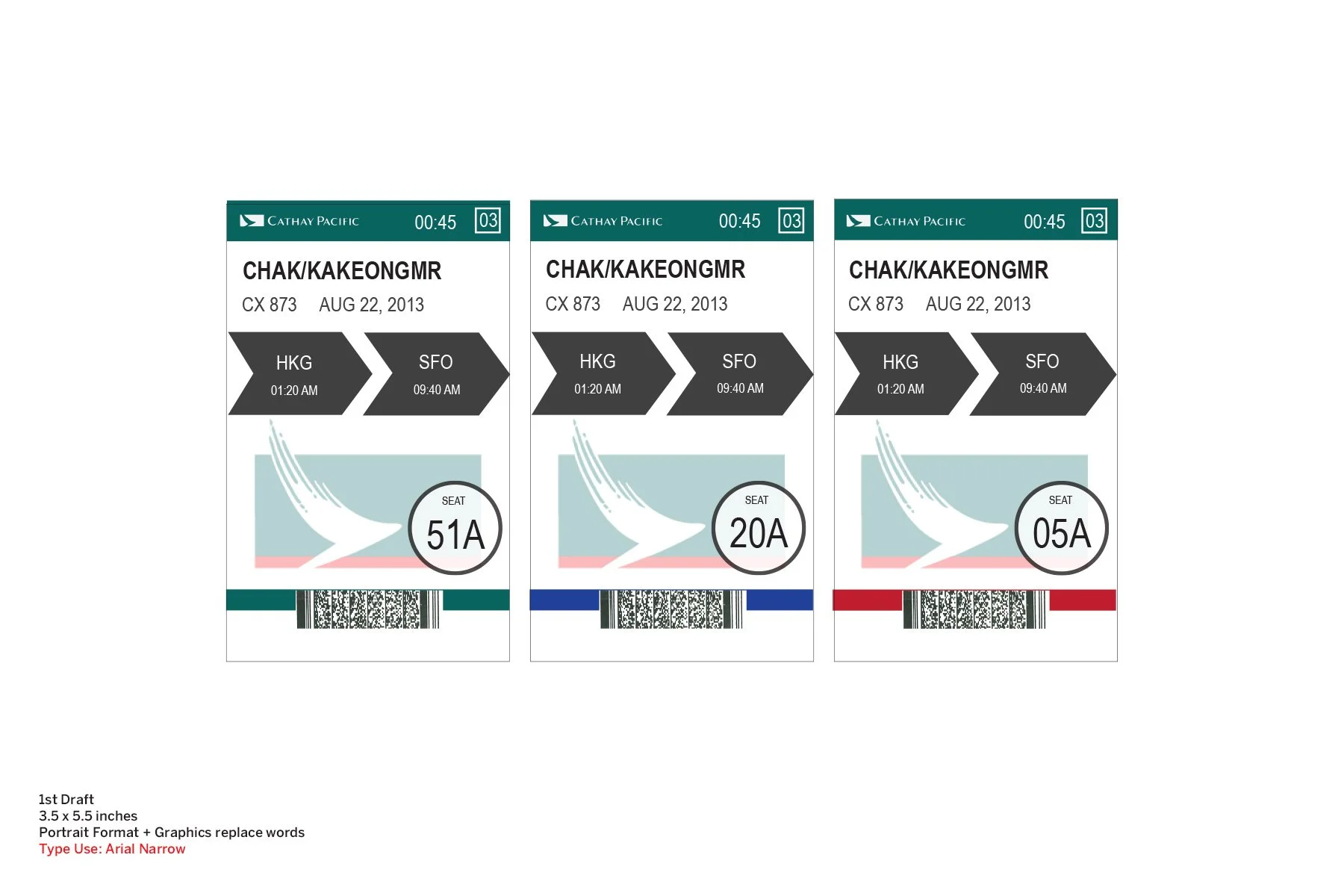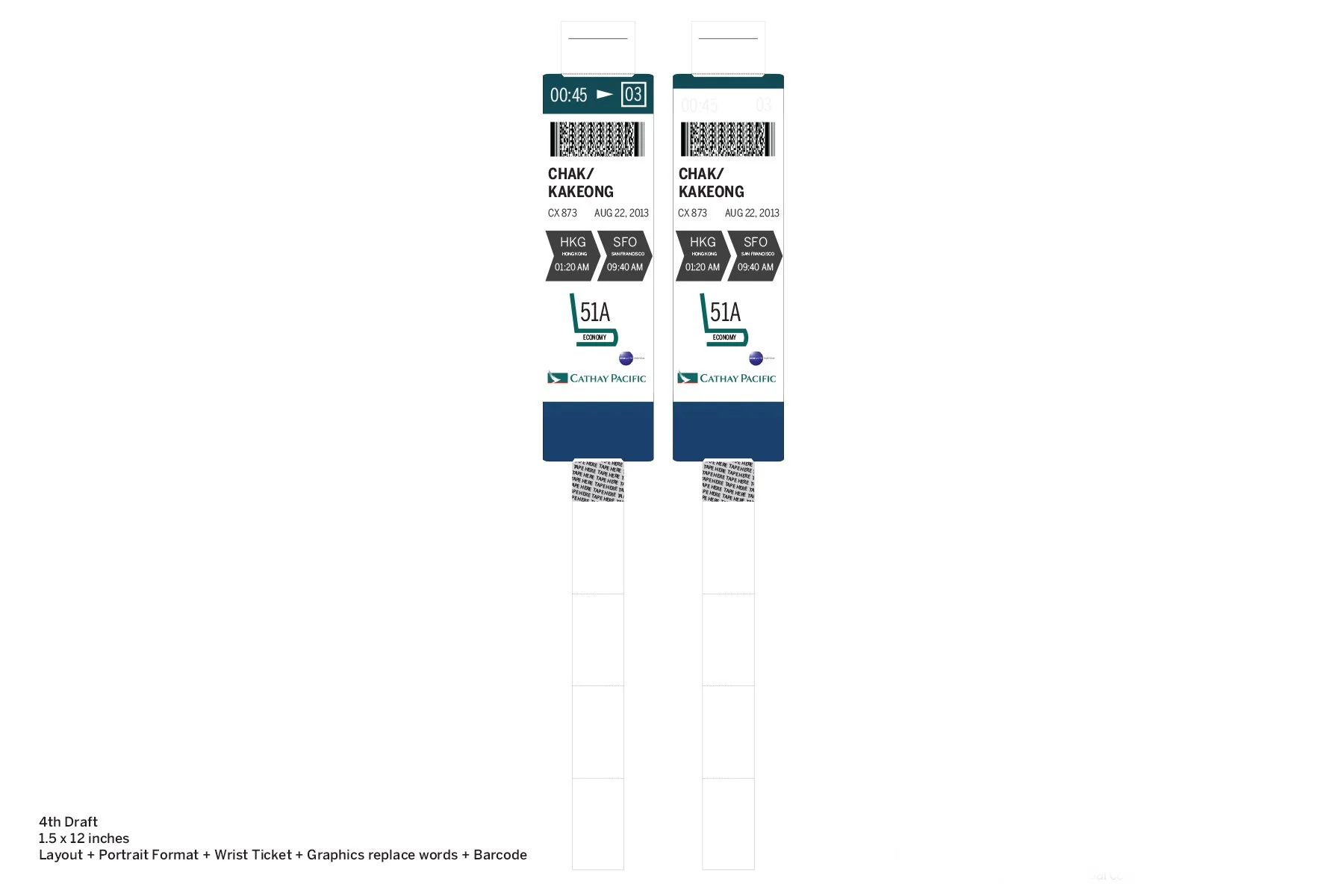The boarding pass is used as a document provided by an airline during check-in, giving a passenger permission to enter the restricted area of an airport and to board the airplane for a particular flight. it also helps identify information such as the name of the passenger, the flight number, and the date and scheduled time for departure. In some cases, flyers can also check in online and print out the boarding passes by themselves. Presenting a boarding pass is mostly required for passengers to enter a secure area of an airport.
Since I always travel a lot to different places in a year. I experienced difficulties when I traveled by carrying a boarding pass at the airport. With further research and my first-person experience of taking flights with a ticket, my goal is to redesign a boarding pass to solve the problems that may be existing in the current boarding pass.
Boarding Pass Redesign
Infographic // Product Design
2014
As for the historical timeline of the Boarding Pass, there is a transformation of the boarding pass layout. Starting from the 90s to the beginning of the 2000s, airlines adopted a similar grid system and color scheme for the layout of the boarding pass, which provided a clear, organized, and consistent system for flyers to follow. Later on, there are more unique features for an individual airline such as classes, membership, and branding. The boarding pass system from airlines changed a lot to fulfill their needs and to build more personalities of the airlines. However, this move has also occurred flyers to have difficulties reading the information displayed on the loading pass, which seems losing the basic function of the boarding pass.
In recent years, there is also a trend to adopt technology as an alternative method for boarding passes. For example, passengers can print out their boarding passes after they check in online; and passengers are able to present their boarding passes through mobile devices such as smartphones. Even though these alternative methods seem to be adopted by the majority of airlines and the public, there are still some uncertainties that make these alternative methods not able to become mainstream to substitute or replace the traditional paper boarding pass. Here are some pros and cons shown below.
At the same time, the current paper boarding pass has drawbacks for passengers to use for their trips, which is why I decided to redesign the boarding pass.
It is difficult to read.
With a variety of boarding pass layouts, passengers are easily confused by the boarding passes with their inconsistent grid and different typographic hierarchies.
The shape does not fit.
The standard boarding pass is a giant piece of paper (8 x 3.5 inches), which fits in neither a wallet nor a passport. The size and shape of the boarding pass become meaningless and redundant.
It is hard to carry.
The gigantic boarding pass is really difficult for passengers to carry while they have lots of heavy baggage. It should be designed in order to be more flexible.
It should be more than a ticket.
For some of the passengers who love to collect boarding passes, having a beautiful well-designed pieces of ephemera would become mementos of an experience to document their journeys.
In response to the problems that the boarding pass may have caused for passengers and airlines, the redesigned boarding pass objects to be sustainable in order to benefit both parties of airlines and passengers regarding its usability, functionality, reliability performance as well as supportability.
Sampling to Create Personas
After consulting feedback from the target audiences, I used memos to organize the key feedback.
Brainstorming Ideas
After listing out the potential problems that the current boarding pass may have, I dug into for the come up with possible solutions to address these problems.
Process
To achieve this redesign challenge, I have experimented with several approaches and formats to engage my ideas.
Final Design
There are several obvious changes to improve for addressing the drawbacks of the current boarding pass such as size, layout, typesetting, graphics etc.
Redesign Features
There are new features improving from the current boarding pass regarding its usability, functionality, reliability performance as well as supportability. Meanwhile, it also targets flight companies for reducing their cost spending on issuing boarding passes.
Since the designed size relatively fits slipping inside of the passport, it can be used depending on users’ preferences to either wear it as a ticket wristband or as a normal ticket for privacy considerations.
Mobile App Version
In order to align with technology, the mobile app version is also created aiming to provide an alternative option for passengers to have their boarding passes by adopting the similar layout of this redesigned boarding pass.
This project will be constantly updated upon feedback.
That’s a wrap for now. Thanks for reading!




























